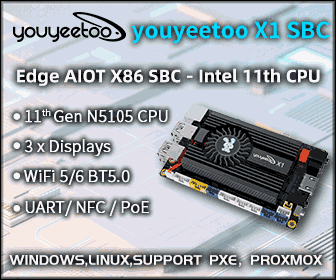Xiaomi Mi Box 3 Enhanced Review
We’ve already taken Xiaomi Mi Box 3 Enhanced TV box apart in the unboxing and teardown post, and after changing the language to English, seen the performance is excellent thanks Mediatek MT8693 hexa-core processor, so I’ve done further experiments and tests with the device, and will report my findings in this review. Settings and Power Handling and Consumption Mibox 3 Enhanced boots reasonably fast I can get to the user interface within 30 seconds. We’ve already the main GITV user interface in previous posts, but I had not gone through the settings yet. There are eight main sections: Display Resolution settings – 3840×2160 @ 60/50/SMPTE24/30/24 Hz, 1080p @ 60/50 Hz, 720p @ 60/50 Hz, Scale and position – For overscan adjustment Sound Button sounds – On/Off Sony/Philips Digital Interface Format – PCM/Raw data (actually used for HDMI audio pass-through) System_update – MIUI TV firmware OTA update Device & Bluetooth – […]





